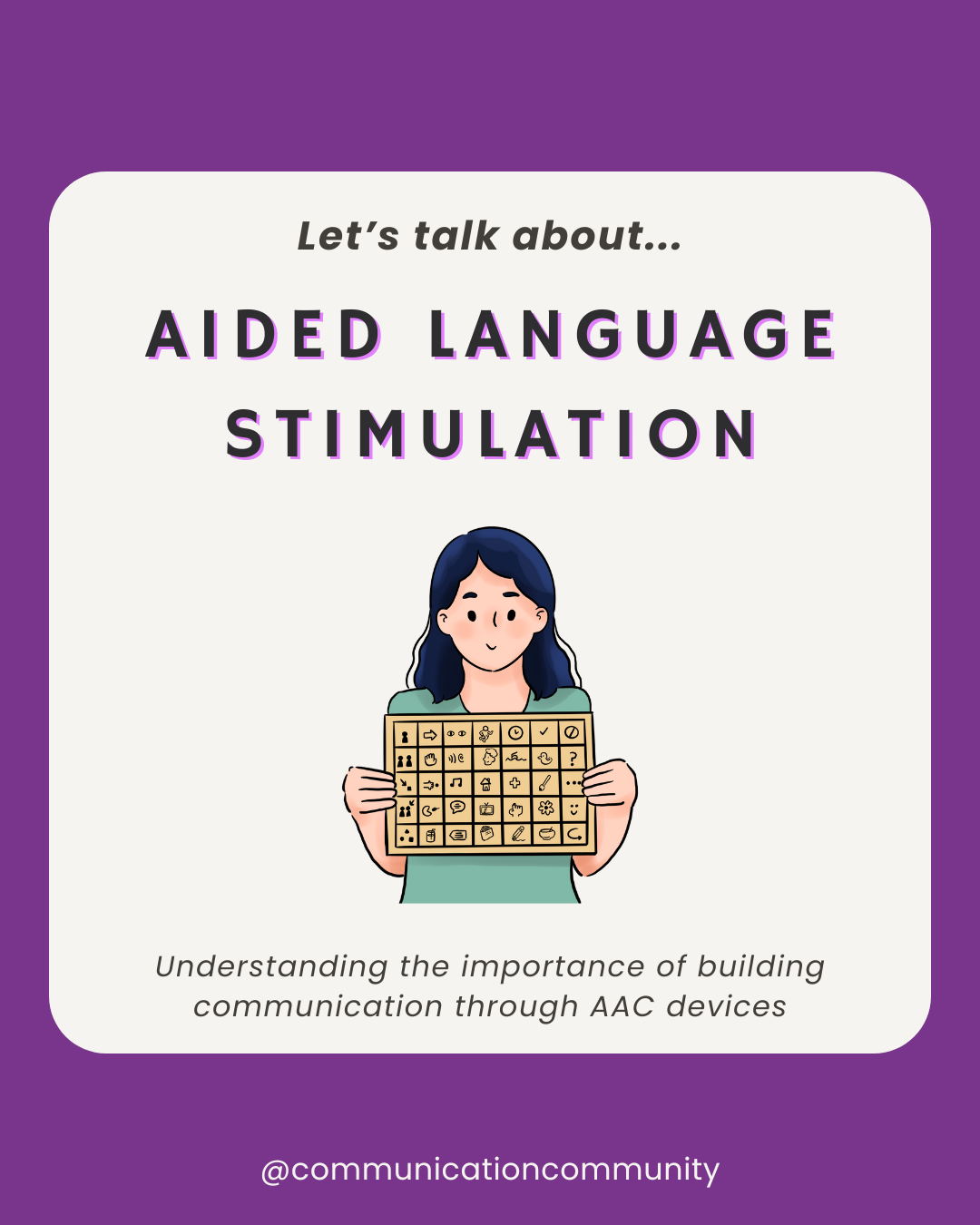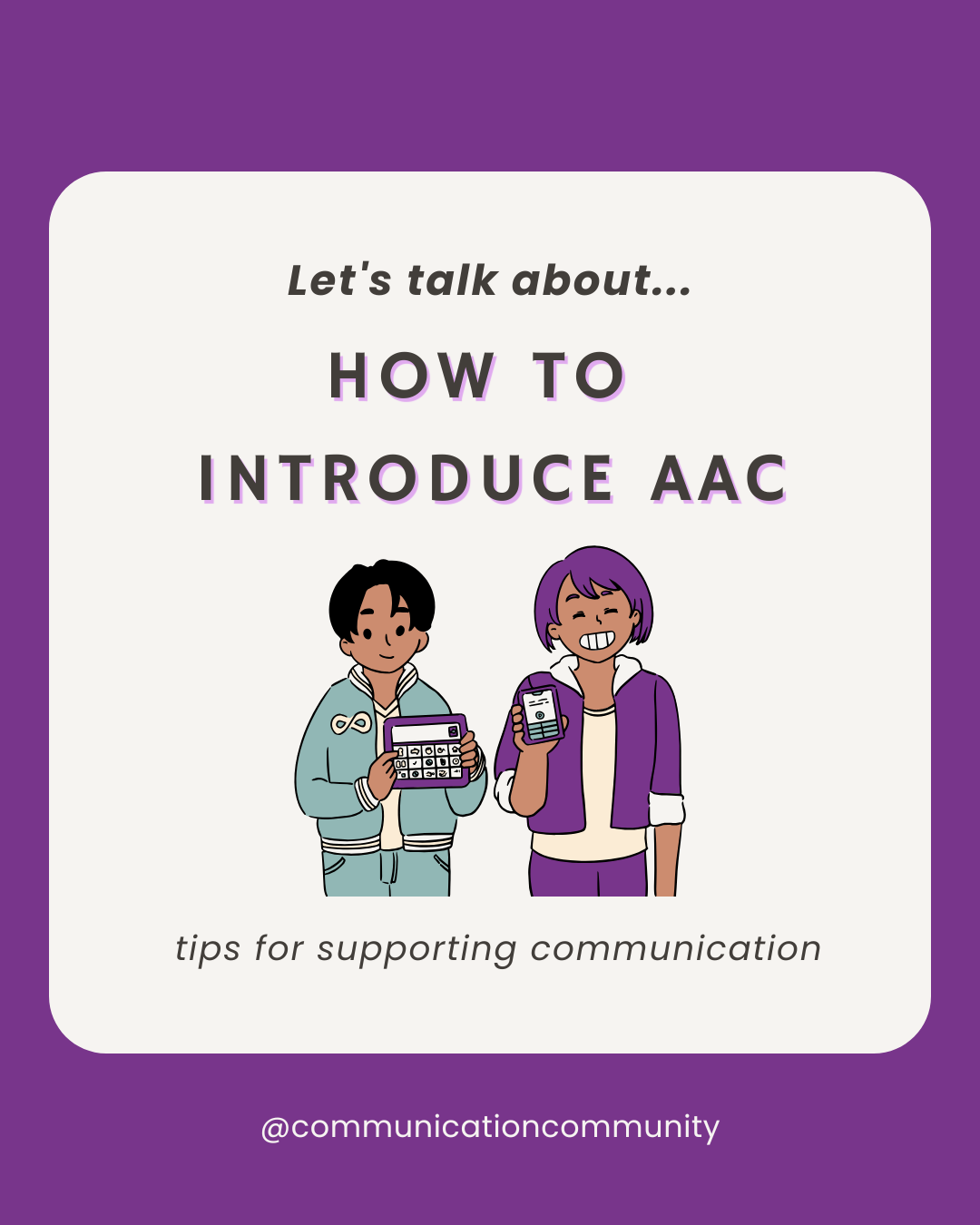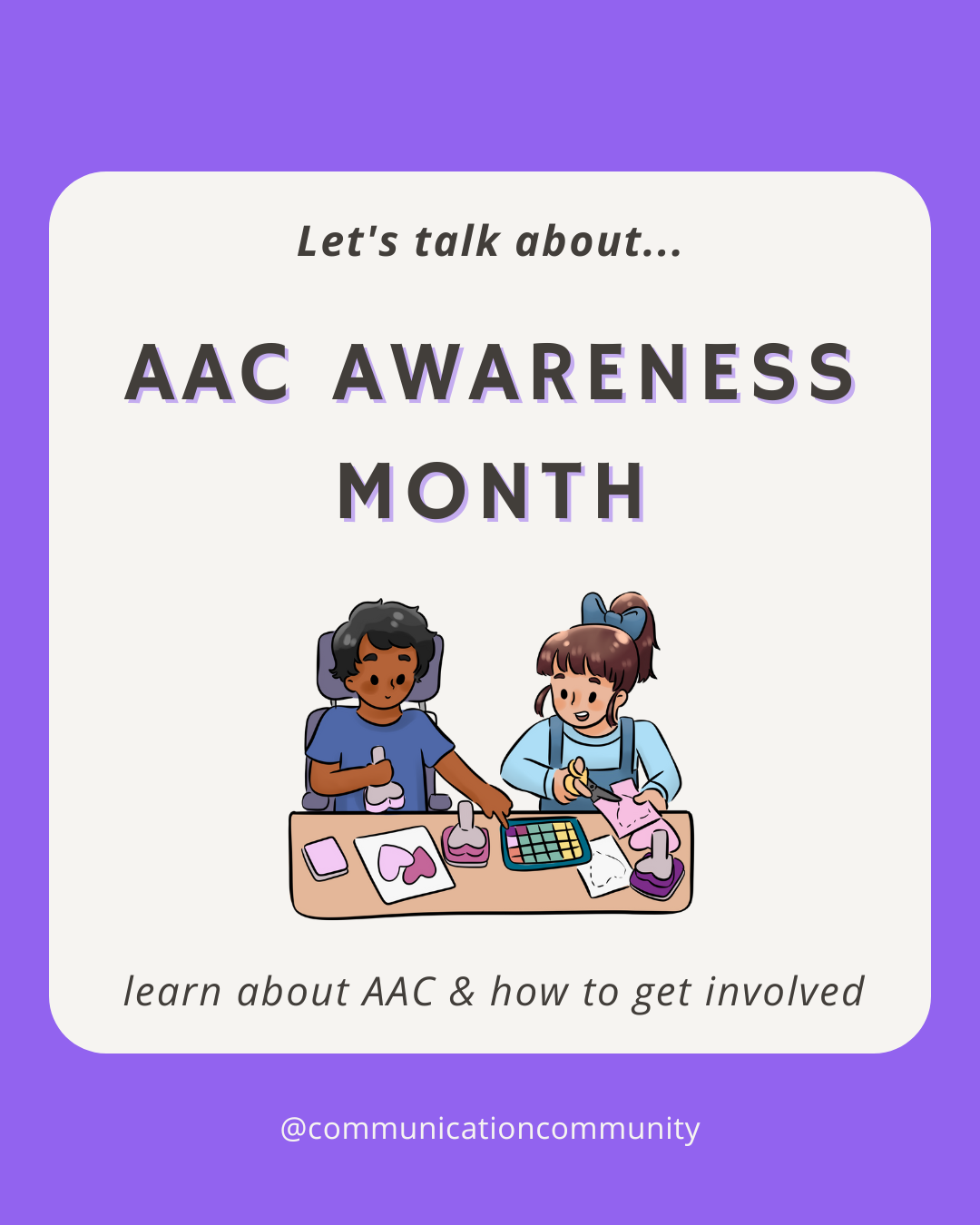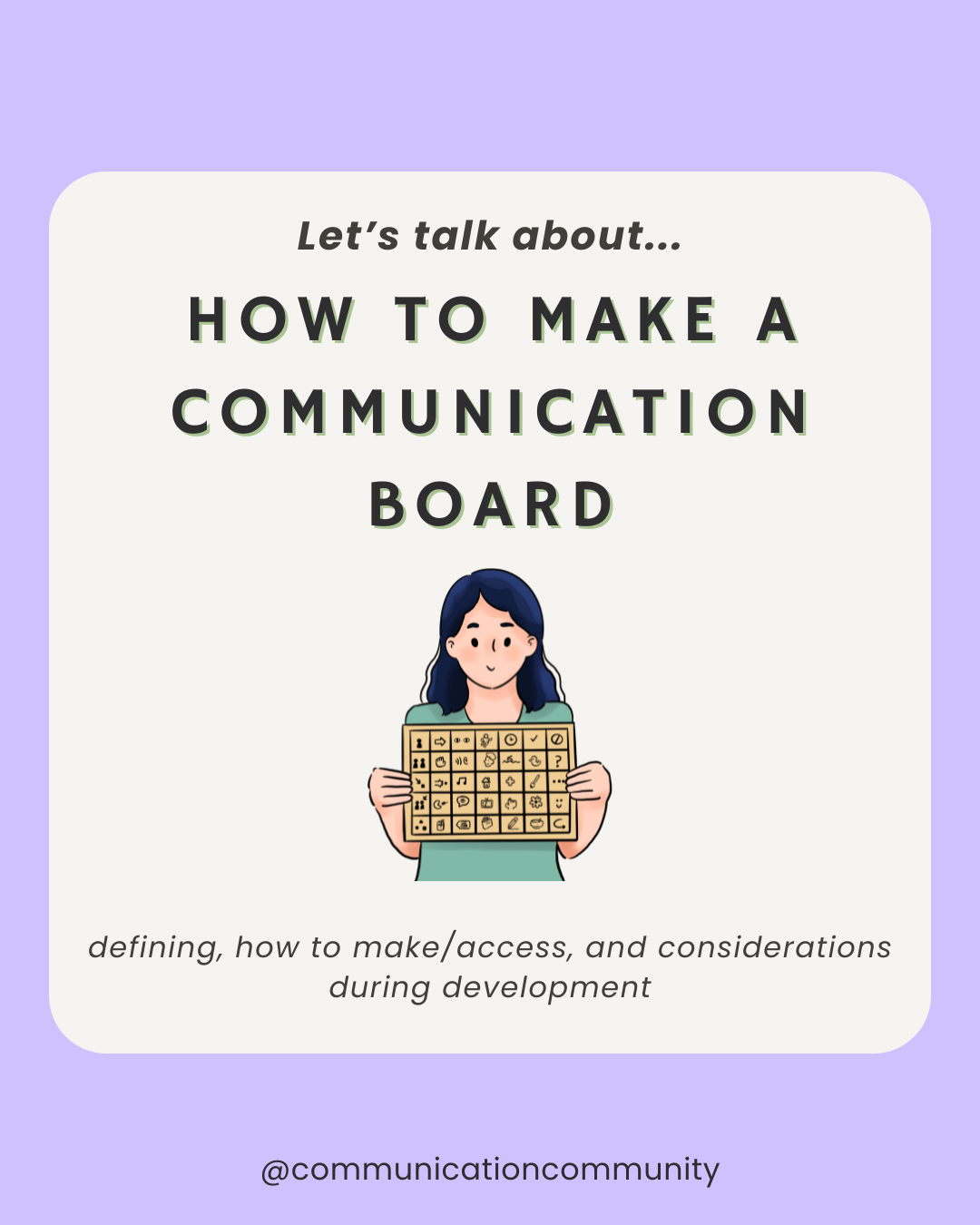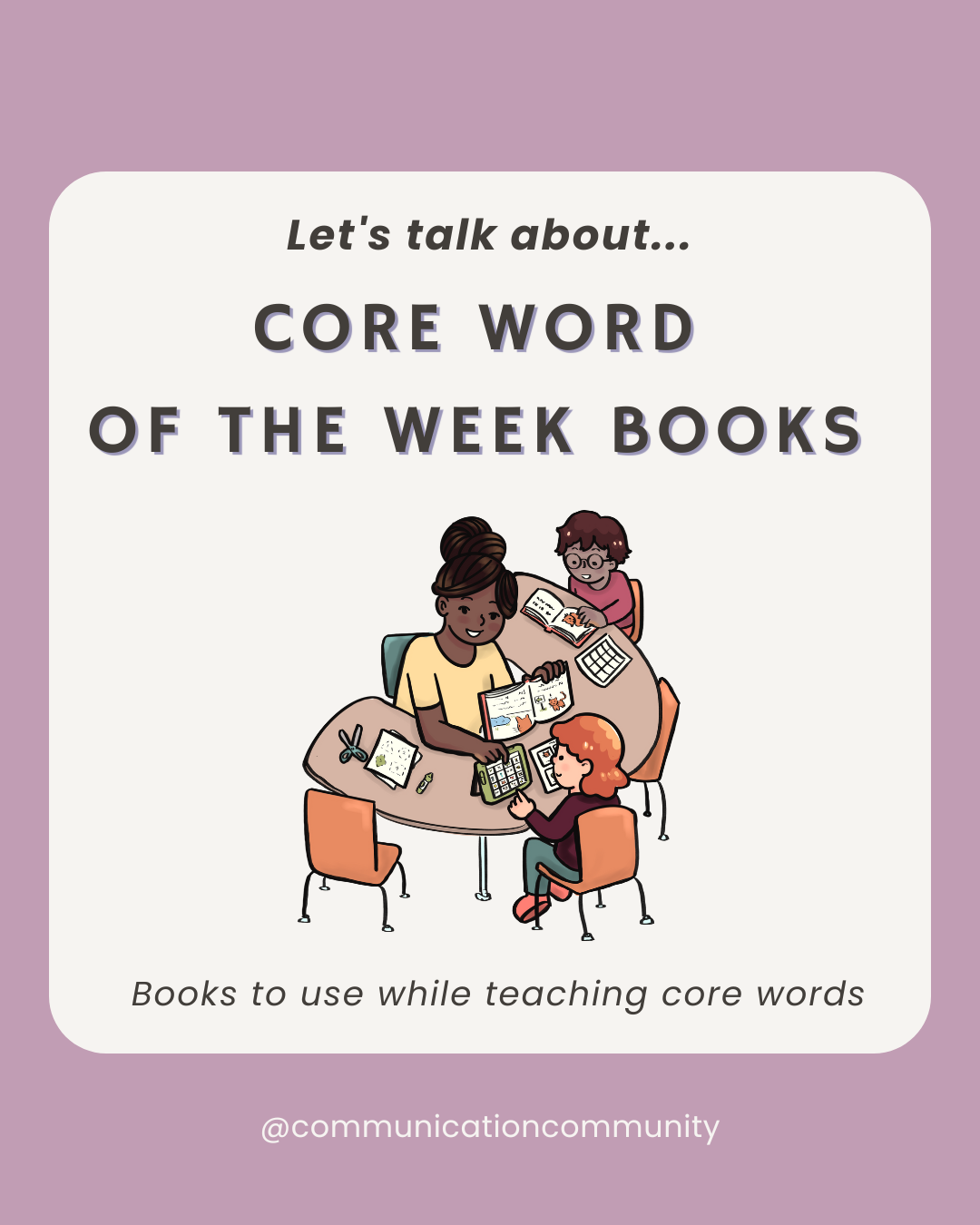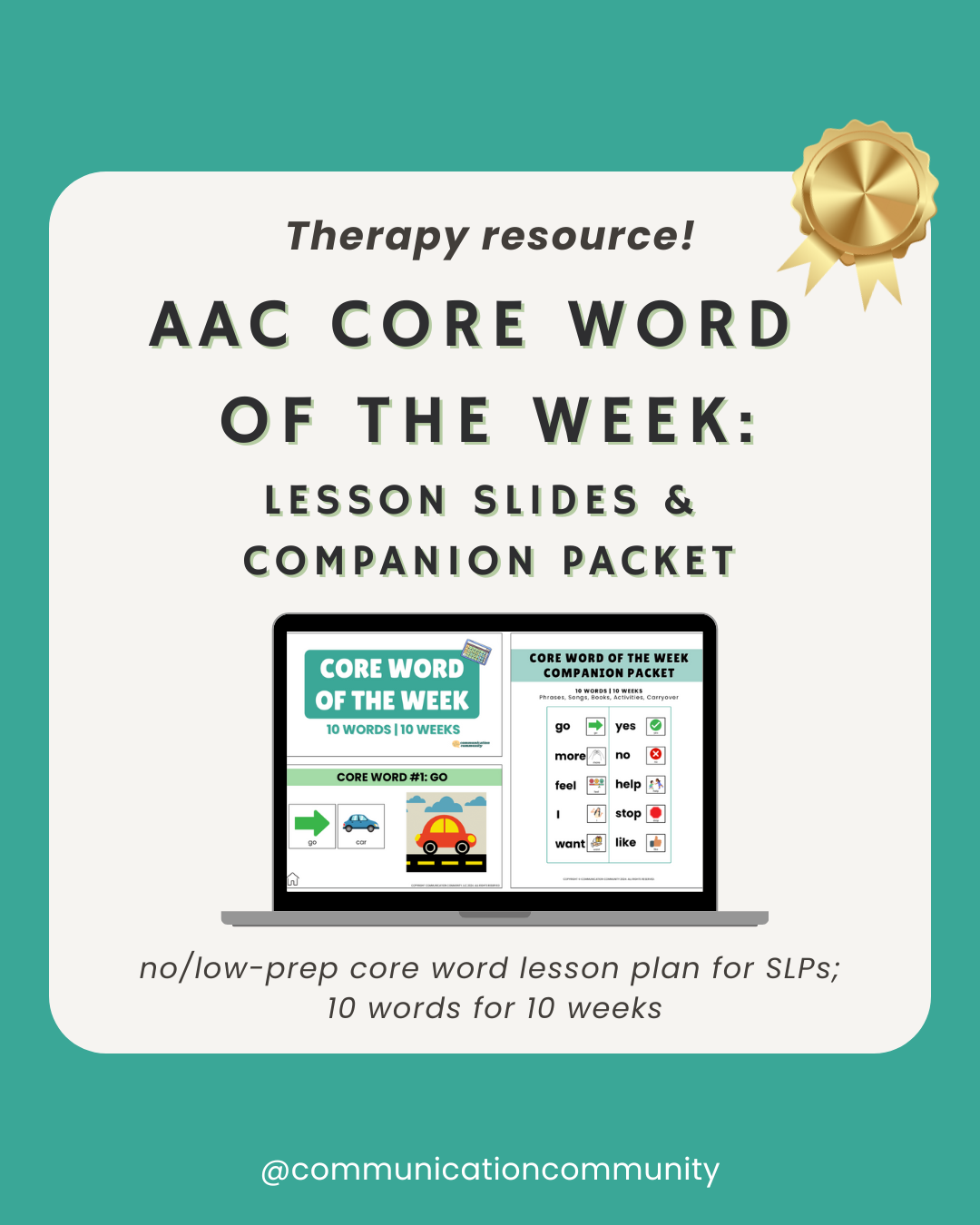Aided Language Stimulation can be thought of as using/modeling AAC in conjunction with another form of communication (e.g., speaking). But before we discuss Aided Language Stimulation, let's review AAC.
What is AAC?
Augmentative and alternative communication (AAC) is a method of communicating using symbols, signs, gestures, body language, and speech-generating devices (SGDs). Typically, individuals use AAC because they are unable to communicate in the “regular” way of speaking. They need ways to augment their communication or alternative ways to communicate.
How do you learn how to use AAC?
Many times, individuals are provided with AAC devices and are expected to communicate using these presented systems with limited background knowledge/information. There may be some instruction and education provided to individuals and their communication partners, but not all AAC users become proficient communicators. This can be frustrating to both the users and their partners, and the users may abandon their devices. Often, this is not due to the individual’s inability to learn how to communicate functionally, but rather due to lack of education and opportunities to do so. Learning to use an AAC system effectively can require a lot of intervention time and is a systematic process.
One of the ways to provide education and communication opportunities is through Aided Language Stimulation, which is also sometimes referred to as Aided Language Input. It is defined as, “a language stimulation approach in which the facilitator points out picture symbols on the child’s communication display in conjunction with all ongoing language stimulation. Through the modeling process, the concept of using the pictorial symbols interactively is demonstrated for the individual” (Goosens’, Crain, and Elder, 1992). Essentially, Aided Language Stimulation is actively modeling AAC use while also speaking to an individual.
Why is modeling through Aided Language Stimulation important?
If you think about it from the perspective of young individuals learning how to talk, this type of modeling makes a lot of sense. When babies are born, they are spoken to constantly, without any expectation that they will talk back until they are 12 to 18 months old. At this time, they may speak in one to two word utterances. They may not fully develop their language skills until they are in their teens. This is all while having language modeled to them all day long.
If you want to help an AAC user develop language, they need that exposure to their language as well. They need adequate time to have language modeled for them in a way that they will communicate. They also need language modeled to them without the expectation that they will always provide a response, as it is not early language learners will respond to every single thing that you say. Additionally, many AAC users have developmental or intellectual disabilities, which means they need even more modeling and time to acquire language than a typical peer.
David Beukelman, who is a professor that specializes in AAC, compared learning how to use AAC with learning how to play a sport or instrument when he said:
“Just like a piano alone doesn’t make a pianist, nor does a basketball make an athlete, an AAC device alone doesn’t make one a competent, proficient communicator. Those who rely on AAC strategies begin as AAC novices and evolve in competence to become AAC experts with support, encouragement, role models, and teaching strategies.”
This short video provides a great overview of Aided Language Stimulation
10 Steps for Aided Language Stimulation
- Ensure that the AAC user is paying (some) attention to you and their AAC device.
- Use the individual’s AAC device or a similar one if you are able to acquire it.
- As you say a word, phrase, or sentence, press the buttons or point to the symbols (for a non-speaking AAC system, such as a low tech communication board), that correspond to what you are saying.
- You do not have to press every single button for what you are saying. Focus on the main words. For example, if you say “get in the car now,” you may press “get,” “in,” and “car.” Consider making your phrases similar to the AAC user’s communication abilities; if they communicate in mostly 1-2 word utterances, model 2-4 word utterances.
- When choosing which buttons to press, try to use more core words, as it can help AAC users develop knowledge and use of them.
- Model all types of communication functions, including greetings, questions, and comments.
- Do not expect the AAC user to respond to everything that you say and model. They may push some of the buttons that you did, e.g. “car,” or just get in the car. (They may also walk away if they don’t actually want to get in the car, hah!)
- It is okay to mess up! Modeling how you press the wrong button or navigate to the incorrect page, then revise your mistake, is a great thing for AAC users to see as well.
- Model as much as possible! It is more beneficial to model 50 times throughout the day than 20 times in a 10-minute session and call it sufficient for the day.
- Any individual that serves as a communication partner can provide Aided Language Stimulation. This includes parents, siblings, caregivers, teachers, and friends.
Download these steps to keep as a reference or share with others!
Notice how she does not expect him to respond to everything she says and models, how she does not press every button for every word she says, and that she sometimes messes up when navigating the device.



Looking for more AAC Resources?
Check out our comprehensive AAC goal bank, containing statements to create many types of AAC goals from linguistics to device competencies.

Other AAC Resources
- How to Write AAC Goals
- How to Make a Communication Board
- What is Multimodal Communication?
- ..and more on our AAC tab
Citations/further resources:
Closing the Gap article
https://speechinthecity.com/aided-language-stimulation/
https://www.tennesseetalks.org/blog/what-is-aided-language-stimulation
https://praacticalaac.org/strategy/using-aided-language-input-to-build-communication-opportunities/
Goossens’, C., Crain, S., & Elder, P. (1992). Engineering the classroom for interactive symbolic communication: An emphasis on the developmental period, 18 months to 5 years. Birmingham, AL

